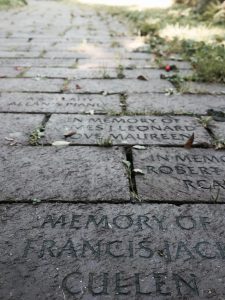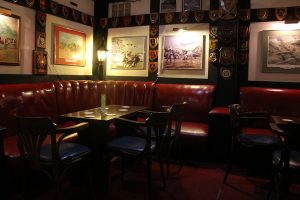Project Proposal:
In the past week, we revised our proposal for the community project. With our proposal complete, we now have a complete set of objectives for our group to accomplish.
Project Proposal – Legion branch 176
Weekly Objectives & Achievements:
Week 1
– Had an introduction to LFS 350 – Land, Food and Community II and the community projects
– Considered top choices of projects
Week 2
– Community projects were assigned
– Had a meeting with group members
– Set up a group blog
– Completed a group terms of reference
– Contacted our project partner, Sarah Carten
Week 3
– Went to the West Point Grey Legion to learn more about the history and objectives of the Royal Canadian Legion from Ron, the Vice Chair
– Clarified our project goals and objectives
Week 4
– Prepared a draft of our proposal
Week 5
– Finished our proposal report
Week 6
– Visited the Billy Bishop Legion and made initial observations
After visiting the Billy Bishop Legion, we contacted the staff and requested permission to carry out interviews. In order to ensure there were enough people to interview, we thought it would be best to conduct these interviews sometime shortly before, during, or after an event. The date that we will actually conduct the interviews will need to be carefully considered.
We were able to take some photos of various aspects of the Legion, and will be able to acquire more detailed photos of their facilities once we officially contact the staff for permission.

The path leading to the Legion’s entrance is somewhat analogous to our progress as there are many obstacles in our way, which is symbolized as the cracks on the path. The destination of our path will not always be known, but after clarifying our tasks and objectives by drafting the proposal, a little more of the path will be illuminated, hopefully leading us towards our end goal of mitigating food insecurity to an acceptable extent.
Reflection Upon a Moment of Significance:
What: Observations were done at the Kitsilano Legion on Saturday October 8, 2016 at 5 PM and the subsequent Sunday at 2 PM. For those of us who went to the Legion on Sunday, visiting the Legion and being virtually the only people there felt very uncomfortable. The staff were most likely skeptical that we were here at our own leisure in the Legion, as we probably looked as out of place as we felt. Funnily enough, we went to the Legion to observe the space and people, but instead felt like the few people that were there were observing us. Those of us that went to the Legion on Saturday at 5 PM had very similar experiences. Although there were roughly ten other people in the Legion, we were nervous and felt like we did not belong. It was obvious that we were out of place at the Legion, and we noticed confused and curious glances from staff as well as the members. Some of us bought drinks while we were there in order to fit in and appear more relaxed. Overall, visiting the Legion was awkward and uncomfortable for all of us, as we were clearly outsiders as well as the youngest people present; the average age was approximately 40 years older. However, it was important for us to experience the space firsthand, as we will eventually conduct interviews there. Hopefully, we will feel a little less awkward in future visits; we expect to feel more welcome once our presence is justified to the staff and members. The unwelcoming ambience may be an issue for students like ourselves as they may be reluctant to enter the Legion, despite the Legion’s many food assets, such as their kitchen and their many rent-able places that could be utilized to build community.
So What: Based on our group’s experience, it is believed that the Legion does not get many clientele unless events are taking place such as the Sunday meat draws. We arrived at the Legion on a Sunday afternoon, just as they were opening, which may also be a reason why it was so quiet. Being the youngest members in the Legion at the time made us stand out, and may potentially hinder the development of relations with the Legion and other businesses in the community. The unwelcoming ambience may be a huge detriment to food insecure students as they would most likely not enter the Legion and be unable to alleviate some of the issues that arise from food insecurity. To make matters worse, as mentioned previously, since not many people attend the Legion at times, their time and resources would be wasted. In our case, for our future visits, we should introduce ourselves early on and explain the purpose of our visit, or potentially mingle with the staff and members so that everyone would feel more comfortable, allowing us to casually ask questions related to our project.
Now What: Many considerations will need to be made when selecting when we will conduct our interviews as the time would need to work for the interviewers and the interviewees, and enough interviewees would need to be present to obtain a satisfactory number of participants to be able to draw conclusions from. It does not seem that formal interviews would work, as this is uncomfortable for both the Legion members and us. To appear more approachable, as a group, we plan to try to blend in by purchasing drinks or playing games, and see if members or staff approach us for conversation, otherwise we will try to approach them subtly.
What also did not go smoothly or as expected for us was obtaining permission from the Legion staff to allow us to conduct interviews. The Billy Bishop Legion did not respond to our emails or Facebook messages; however, Tim Harford stresses in his 2015 TED Talk “How messy problems can inspire creativity” (available on YouTube), that a formal means of contact may not work, so perhaps we should try approaching our interviews in another way, which aligned with Dr. Will Valley’s suggestion. Formal online and in person communications to the Legion were not very effective, therefore when we do conduct interviews, we should try a completely different approach such as informally acquiring information through casual conversations.
Similarly, in the paper by Miewald and Ostry (2014) titled “A Warm Meal and a Bed: Intersections of Housing and Food Security in Vancouver’s Downtown Eastside,”, through informal interviews, we hope to obtain enough information from Legion members and staff to access the degree of use of the kitchen at the Kitsilano Legion. If there is the potential for improvement by providing more meals, and or getting involved with community partners to increase community food security, these suggestions will be highlighted in our report and suggested to our project partner Sarah Carten.
Coming Up…
The task of contacting the staff at the Kitsilano Legion to inquire about conducting interviews will be delegated to one person. The schedule of events on this Legion branch’s website will be used to choose a date that coincides with an event, so high traffic at the branch will allow us to interview an adequate amount of people.

The Bigger Picture:
This week’s course objective was to “consider how behavior, identity and action is shaped by and shapes an individual’s efforts to engage in positive change in the food system” (http://lfs350.landfood.ubc.ca/session-notes/term-1-session-notes/session-xx-flexible-learning-2-of-4/). During our first visit to the Legion, we experienced how identity and behaviour can affect the way someone engages with an environment. We also acknowledged the fact that the ambience and the mood of a place really sets an impression; and for us the dark and gloomy environment of this Legion exacerbated the uneasiness we felt. As the staff was unaware of our project, we all felt the need to be more reserved and quieter than usual because we identify ourselves as university students, which is evidently younger than their typical clientele. As a result, we worry whether the branch will allow us to hold interviews from which we plan to draw conclusions to suggest ways that the branch can better utilize its resources and provide for its members and the community, due to our reserved attitudes.